Urbancraft: Stakeholders’ Symphony
Yilin Wang
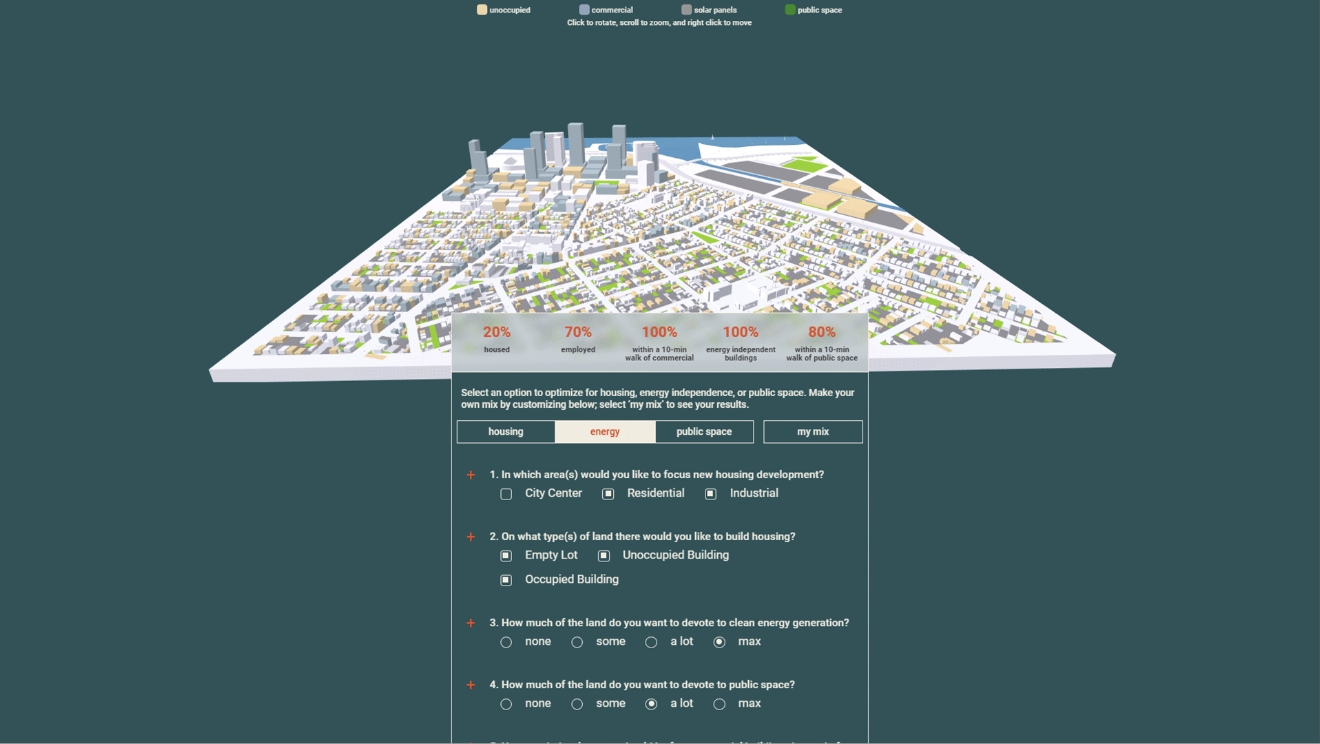
The above precedent is a digital twin computational design platform conducted by KPFui, which is called Leeside. Urban design faces the challenge of coordinating among stakeholders with diverse backgrounds and interests, making it difficult to satisfy everyone. Based on this research question, The initial vision is to propose a tool that helps different stakeholders (community, architects, real estate) think about trade-offs when it comes to urban space innovation. Specifically, it is about enviro-responsive form VS social needs/ energy efficiency/ maximal buildable area. As a result, my proposal for the capstone project are as followed:
- Can community participates into design process?
- Can users play and organize blocks by themselves based on metrics they consider instead of preprocessing all data and demonstrate directly?
- Can different stakeholders play the interface at the same time and get to learn trade-offs from each other?
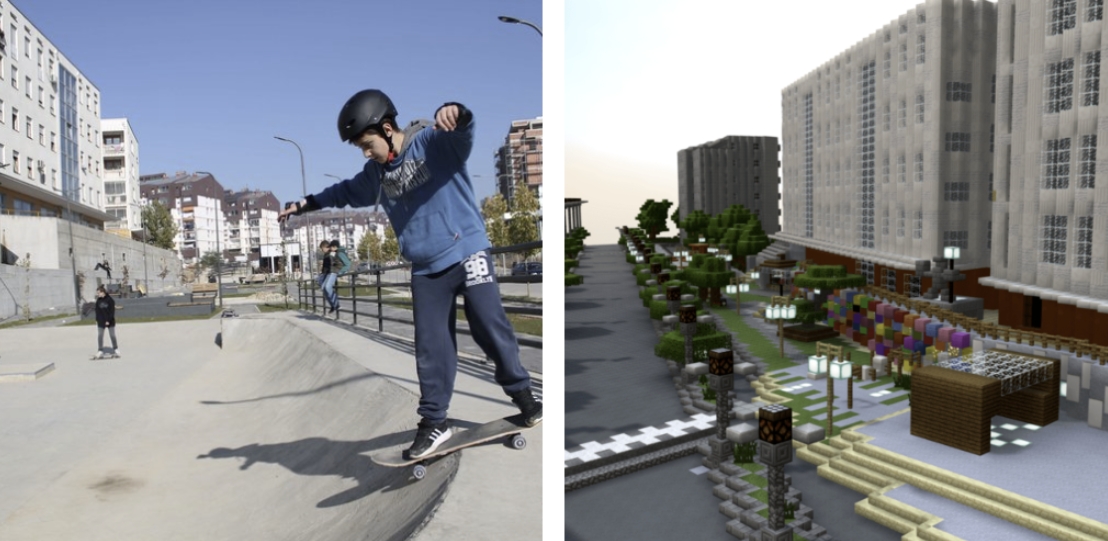
I was inspired by this project, which is a collaborative project between UN and Minecraft: Block by Block.Kosovo is one of the poorest areas of Europe, with a long history of conflict between its Albanian and Serbian populations. Kosovo’s cities have experienced rapid growth in recent years, and there is a growing need for well-designed public spaces that can be enjoyed by everyone.
The Municipality of Pristina was one of the first sites in Europe selected by UN-Habitat to test the Block by Block Methodology for upgrading public space. The initial project focused on revitalizing a former green market in Sunny Hill, one of Pristina’s largest and most populous neighborhoods. The site’s temporary market structures had been removed, leaving an abandoned, concrete-covered space that was rarely used by the community’s 4,000 residents.
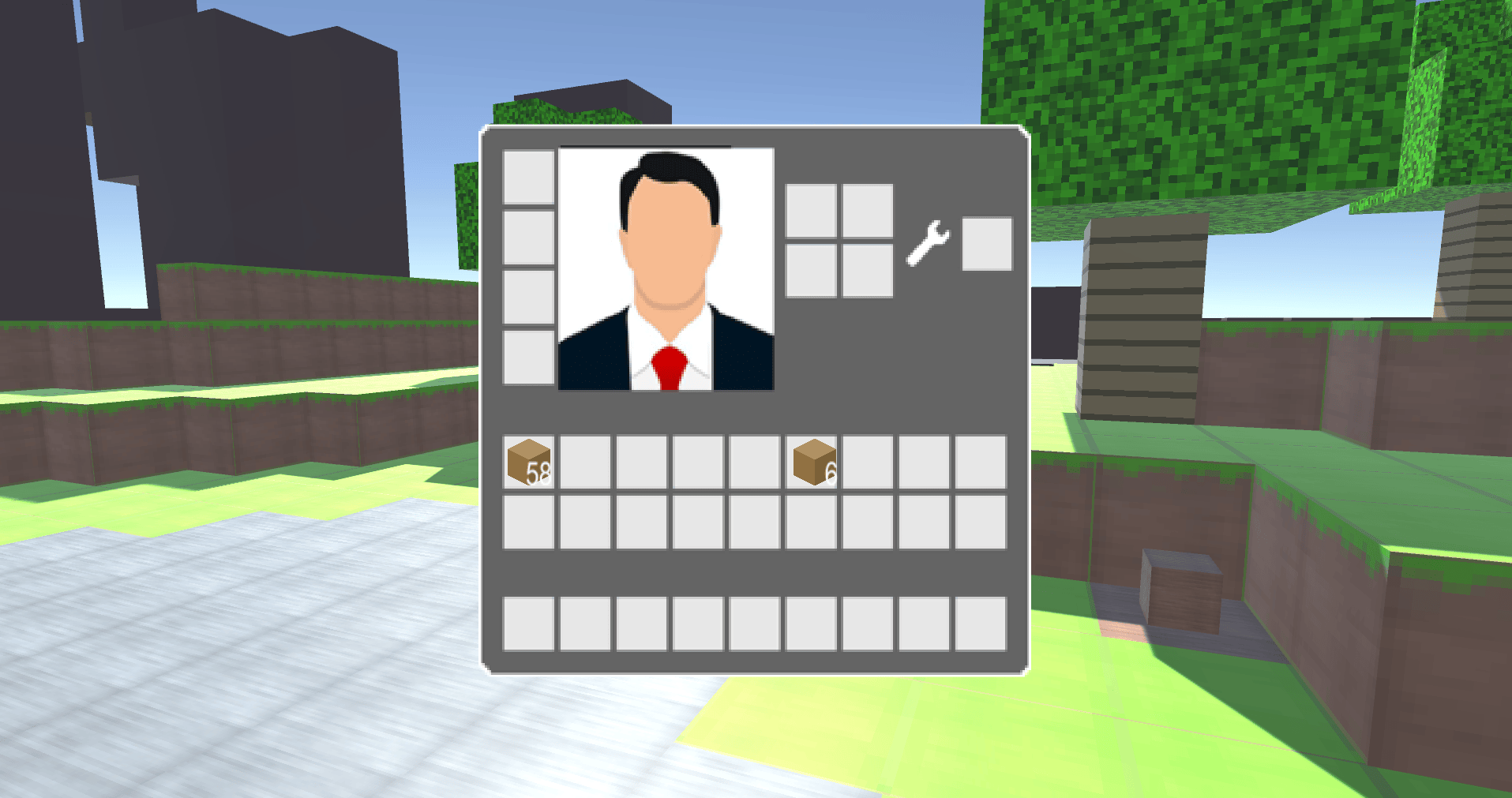
UrbanCraft is a serious game designed to engage community members, architects, and developers in understanding and negotiating the complex trade-offs involved in urban design. By simulating real-world urban planning scenarios, the game facilitates a deeper understanding of the impacts of various development decisions.
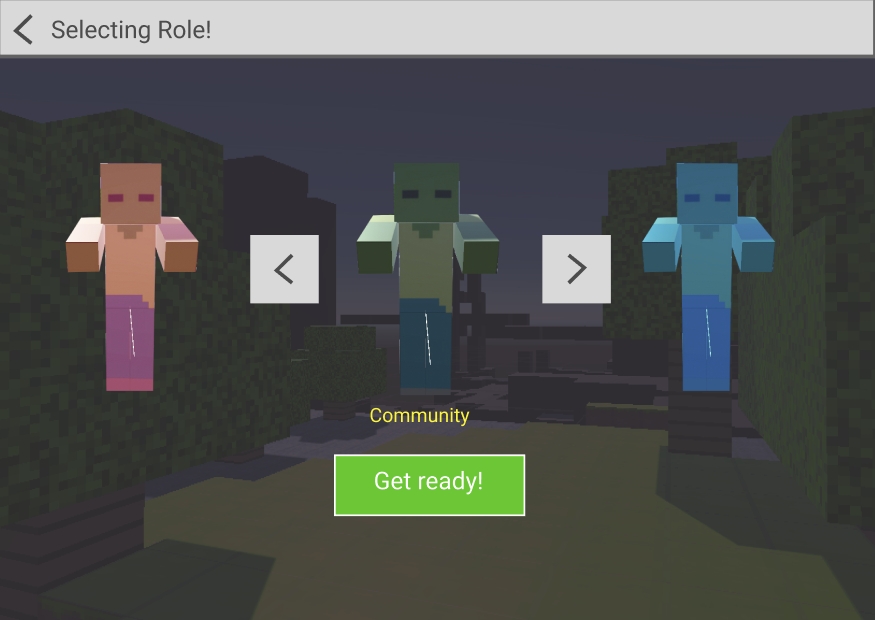
Choose Your Role: Begin by selecting one of three roles:
- Community Member: Focuses on community equity and gentrification issues.
- Architect: Concentrates on environmental responsiveness and energy efficiency.
- Developer: Aims to maximize economic returns and buildable area.
The site is initially chosen as Williamsburg in Brooklyn, since it shows conflicts among those stakeholders in reality.

Interface Overview: Each player uses a common toolbar containing colored blocks representing different types of buildings and public spaces. The 3D game environment lets you visualize your designs in real-time.
Role-Specific Metrics: Depending on your selected role and metrics, your interface will display different metrics to guide your design decisions.


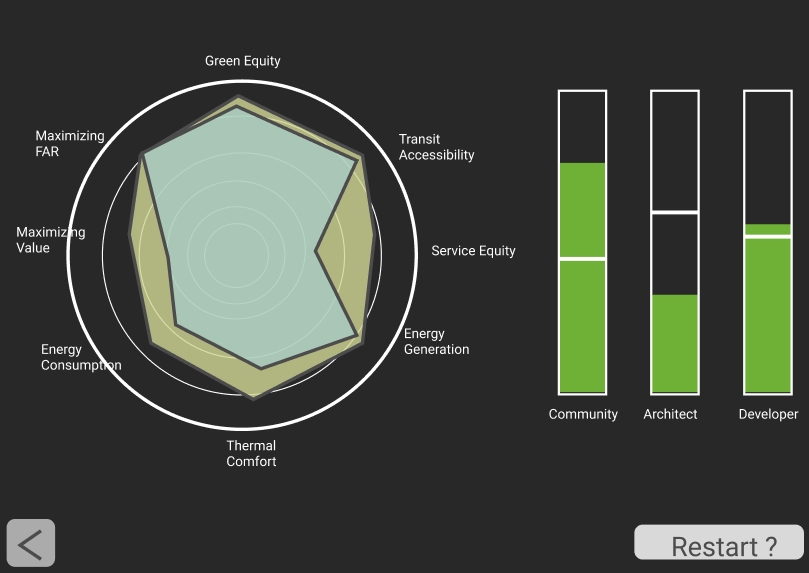
Review and Evaluate: After completing your design, enter the 'Design Review Board' phase. Here, your design is evaluated from the perspectives of all three roles using a radar diagram, showing how well your design balances the diverse needs.
Learn from Others: See how your decisions align or conflict with the priorities of other roles, providing a comprehensive understanding of stakeholder impacts.